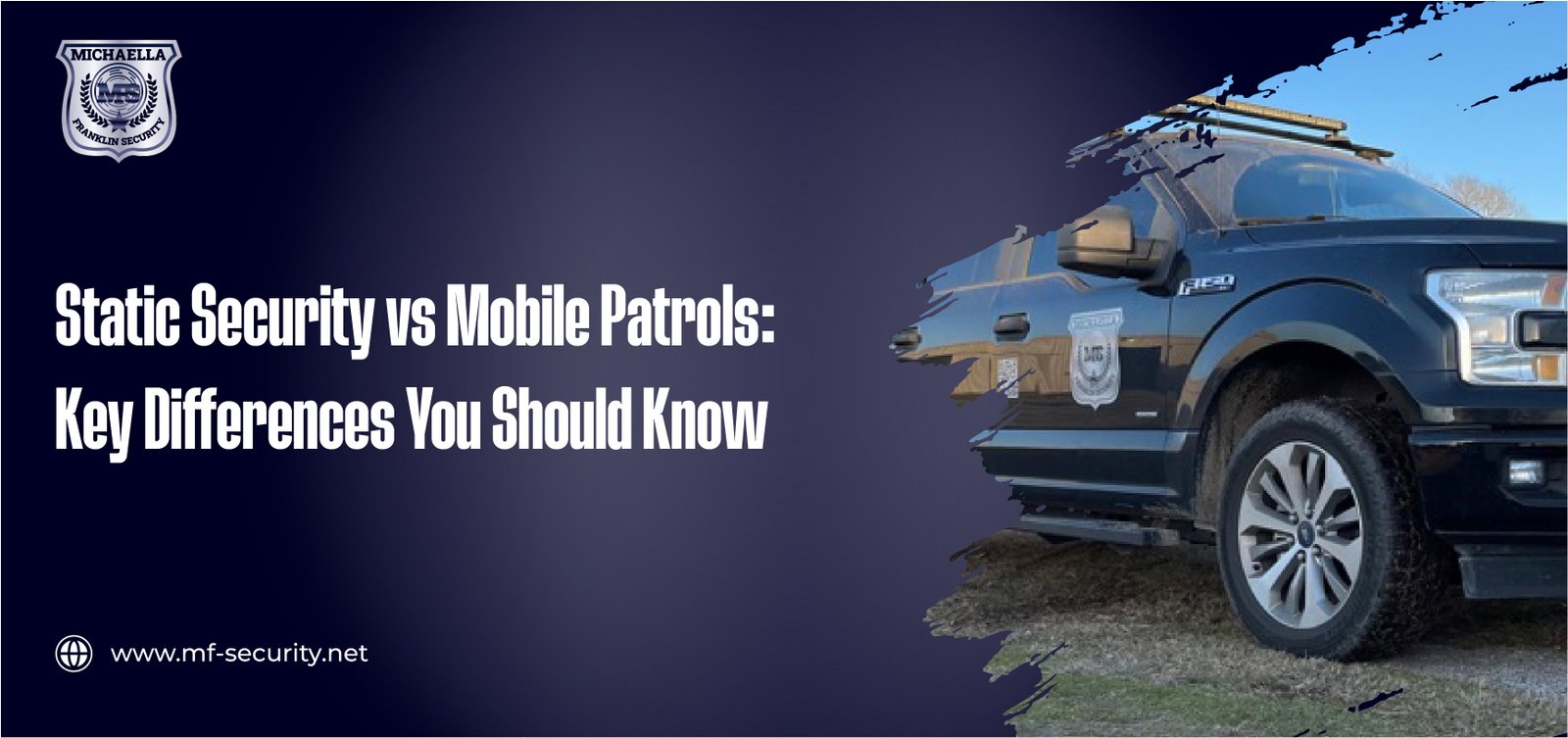Introduction
Security is an essential function for any organization. From corporate offices and healthcare facilities to shopping centers and event venues, the presence of trained personnel plays a critical role in deterring threats, protecting assets, and creating a sense of safety for employees, customers, and visitors.
When designing a security program, decision-makers face a central question: should they hire their own in-house security staff (known as proprietary security) or outsource the function to a contract security company?
The answer is not simple. Each model offers specific advantages and drawbacks related to cost, liability, flexibility, and organizational culture. Some organizations prefer the loyalty and integration of proprietary teams, while others value the scalability and cost savings of contract firms. Increasingly, hybrid models that combine both approaches are also being adopted.
This article provides a detailed overview of the two models. It defines proprietary and contract security, compares them across key factors, answers frequently asked questions, and outlines scenarios where each model works best.
What Is Proprietary (In-House) Security?
Proprietary security refers to security staff directly employed by the organization they protect. These individuals are full-time employees, integrated into the company’s workforce.
Characteristics of Proprietary Security
- Employment relationship: Guards are on the company’s payroll, receive salaries and benefits, and are managed by the organization’s HR and security leadership.
- Control: Employers retain full authority over recruitment, training, scheduling, and performance standards.
- Cultural alignment: Because they are embedded within the company, proprietary staff may develop loyalty and a stronger sense of belonging.
- Responsibility: The organization bears the administrative and legal responsibilities associated with employment, including payroll taxes, workers’ compensation, liability insurance, and compliance with licensing laws.
Typical Use Cases
Proprietary security is often found in:
- Corporate campuses with high-value assets.
- Sensitive facilities like hospitals or government buildings.
- Businesses where confidentiality and cultural alignment are crucial.
Hire Expert Security for Your Organization
Compare options and secure your premises with professional access control security guards who provide reliable monitoring and protection.
What Is Contract Security?
Contract security involves hiring an external company that provides trained security personnel to clients. The guards remain employees of the provider, not the client.
Characteristics of Contract Security
- Employment relationship: The provider manages hiring, payroll, benefits, and compliance.
- Flexibility: Clients can request staffing increases or reductions depending on seasonal needs, events, or emerging risks.
- Expertise: Security companies often provide specialized training, supervision, and industry knowledge.
- Liability transfer: Many legal and insurance responsibilities rest with the provider, reducing the client’s burden.
Typical Use Cases
Contract security is commonly used by:
- Retail stores with variable traffic.
- Event venues requiring temporary coverage.
- Organizations seeking scalable, cost-efficient solutions.
Key Differences Between Proprietary and Contract Security
The table below summarizes the core contrasts between the two models:
| Factor | Proprietary Security | Contract Security |
|---|---|---|
| Control | Full control over staff, policies, and culture | Limited control; provider manages operations |
| Cost | Higher overall (salaries, benefits, training, liability) | Lower due to economies of scale |
| Flexibility | Fixed workforce; difficult to scale quickly | Highly scalable, adaptable to changing needs |
| Training | Customized to company standards | Standardized by provider; varies in quality |
| Liability | Organization assumes risk and compliance | Provider covers licensing, insurance, and liability |
| Loyalty | Stronger loyalty, deeper cultural integration | Higher turnover, weaker company alignment |
Frequently Asked Questions About Proprietary vs Contract Security
1. What is the main difference between proprietary and contract security?
The primary distinction lies in the employment relationship. Proprietary guards are direct employees of the organization they protect. Contract guards are employed by an external security firm that supplies services to the client. This difference shapes cost structures, liability, and cultural alignment.
2. Which option is more cost-effective?
Contract security is generally more affordable. Providers spread expenses for training, insurance, and administration across many clients. Proprietary teams require full financial support from the organization, including salaries, benefits, and overhead. While proprietary staff may provide greater consistency, they represent a larger long-term financial commitment.
3. Which model offers better control and customization?
Proprietary security provides greater control. Employers design training, set policies, and manage performance directly. This ensures staff align with organizational culture and priorities. Contract security allows less control since the provider determines most procedures. However, clients can often request specific standards or training.
4. Which option is more flexible and scalable?
Contract security offers higher scalability. Providers can rapidly add or reduce staff to meet seasonal demands, one-time events, or emergencies. Proprietary teams are harder to adjust quickly. Recruitment, training, and HR processes take time and resources, limiting flexibility.
5. How do liability and legal responsibilities differ?
In proprietary models, the organization is fully responsible for compliance with licensing laws, liability insurance, workers’ compensation, and legal claims. Contract security transfers much of this burden to the provider, who carries insurance and ensures licensing. This shift reduces legal exposure for the client.
6. How does staff turnover compare?
Proprietary security staff often have lower turnover rates. They receive company benefits and may view the role as a long-term career. Contract security staff typically face higher turnover, as they are employed by the provider and may rotate between assignments. This can affect consistency and client familiarity.
7. Can organizations use both models?
Yes. Many businesses adopt a hybrid model. Proprietary staff handle core, sensitive roles requiring loyalty and deep company knowledge, while contract staff cover temporary or variable needs. This combination balances control with flexibility.
Get Flexible Security Solutions
Learn how event security guards can support your business during peak times, events, or high-risk scenarios with trained personnel.
Advantages and Disadvantages
Advantages of Proprietary Security
- Stronger loyalty and alignment with company culture.
- Greater control over policies, training, and performance.
- Staff may be more invested in long-term organizational goals.
Disadvantages of Proprietary Security
- Higher cost due to salaries, benefits, and liability.
- Increased administrative responsibilities.
- Limited flexibility in scaling staff numbers.
Advantages of Contract Security
- Lower overall cost through economies of scale.
- High flexibility to adjust staffing quickly.
- Reduced liability and compliance burden.
- Access to specialized training and expertise.
Disadvantages of Contract Security
- Less control over training and performance.
- Higher turnover, leading to reduced consistency.
- Weaker cultural integration with the client organization.
When to Choose Proprietary Security
Organizations may favor proprietary models when:
- Security roles require deep cultural alignment.
- Assets are highly sensitive (intellectual property, medical data).
- The organization has the resources to manage liability and compliance.
- Long-term stability is more important than cost savings.
When to Choose Contract Security
Contract security is often the best choice when:
- Budgets are limited.
- Security needs fluctuate seasonally or for events.
- The organization lacks capacity to handle employment, training, and liability.
- Rapid scalability is a priority.
The Hybrid Approach
Many organizations find value in combining both models. Proprietary staff protect core areas requiring trust and loyalty, while contract guards cover entrances, events, or short-term needs. This approach balances stability with flexibility. For example, a hospital may employ proprietary guards for sensitive patient areas but hire contract staff for visitor screening during peak hours.
Practical Checklist for Decision-Makers
When choosing a security model, organizations should evaluate:
- Budget: Can the organization sustain salaries, benefits, and liability?
- Legal capacity: Is there infrastructure to handle licensing and compliance?
- Risk profile: How sensitive are the assets being protected?
- Flexibility needs: Will staffing levels fluctuate?
- Cultural priorities: Is long-term loyalty critical?
Conclusion
The choice between proprietary and contract security depends on organizational priorities. Proprietary staff provide control, loyalty, and cultural integration but come with higher costs and responsibilities. Contract security offers cost savings, scalability, and reduced liability, though at the expense of control and consistency.
For many organizations, a hybrid model combining both approaches is most effective. By aligning security staffing with budget, risk tolerance, and operational needs, businesses can create a balanced program that ensures safety while supporting long-term goals.
Protect Your Workplace and Community
Explore community protection services to implement tailored security strategies and reduce risk for employees, clients, and visitors.





